Are you ready to sink your teeth into some juicy brain teasers? We’ve gathered the most refreshing collection of watermelon riddles that’ll keep you entertained while testing your wit. These fun puzzles are perfect for summer gatherings, classroom activities, or simply challenging friends and family.
Watermelons aren’t just delicious summer treats—they’re also fantastic inspiration for clever wordplay and mind-bending riddles. We’ll share riddles that range from easy-to-solve teasers for kids to more challenging brainteasers that might stump even the cleverest adults. Whether you’re looking to liven up a picnic or need educational content with a fruity twist, our collection has something for everyone.
10 Brain-Teasing Riddles About Watermelon for Summer Fun
- What has green skin, red flesh, and black freckles all over?
We bet this one’s pretty obvious! A watermelon, of course. This classic starter riddle sets the tone for the fruity fun ahead.
- I’m round and green outside, red and sweet inside, with many black seeds. What am I?
A juicy watermelon is the answer here. The contrasting colors and sweet interior make this summer fruit unmistakable.
- What fruit is always sad because it’s filled with water?
The answer is a water-MELON! This play on words highlights how melons contain over 90% water, making them perfect for hydration during hot summer days.
- Why don’t watermelons ever get married?
Because they cantaloupe! This pun-based riddle combines “can’t elope” with cantaloupe, another popular melon variety.
- I grow from a vine, have a striped design, and keep my seeds inside my rind. What am I?
A watermelon grows on sprawling vines, features distinctive green stripes, and stores its seeds protected within its hard outer shell.
- What has seeds you can spit, juice that will drip, and a rind you don’t want to grip?
Watermelon seed-spitting contests are a summer tradition, while its juicy flesh inevitably drips down chins, and the rind is typically discarded after eating.
- I’m heavy when whole but weightless when you eat what’s inside. What am I?
Watermelons can weigh up to 20 pounds whole, but after consuming the flesh, only the lightweight rind remains.
- What summer fruit can you eat, spit, and play baseball with?
Watermelons provide edible flesh, seeds for spitting contests, and the rind can even be carved into a baseball helmet shape for summer fun.
- I’m green on the outside, red in the middle, with black spots throughout. I appear in summer and disappear in winter. What am I?
Watermelons have peak season during summer months and are rarely found fresh during winter, making them a true seasonal delight.
- What fruit makes the best summer bodyguard?
A water-MELON because it’s always SEED-curity conscious! This wordplay combines “seed” and “security” for a groan-worthy but memorable finish to our riddle collection.
The Classic Watermelon Seed Counting Puzzle
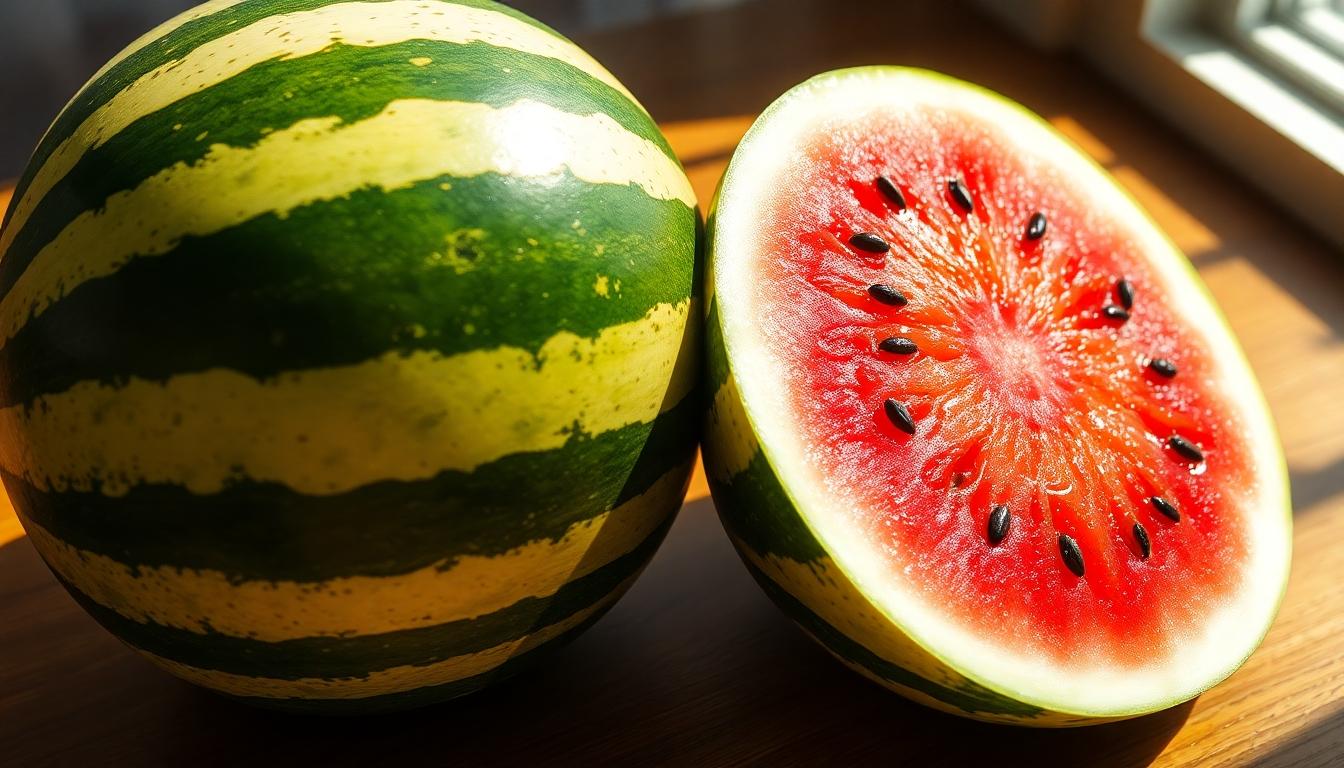
Have you ever encountered the deceptively simple watermelon seed counting riddle? This popular mathematical puzzle challenges your perception and analytical skills by asking you to determine the total number of seeds in a watermelon based on limited information.
How to Solve This Mathematical Challenge
The watermelon seed counting puzzle typically presents itself in a format like: “If a watermelon is divided into 10 slices, each with 5 visible seeds, how many seeds are in the entire watermelon?” Many people immediately multiply these numbers (10 × 5 = 50), but this approach overlooks a crucial fact: visible seeds represent only a small fraction of the total.
To properly solve this challenge, we recommend:
- Using an estimation framework based on agricultural data, which tells us watermelons contain between 150-700 seeds depending on size and variety
- Avoiding simple linear multiplication that only accounts for surface-level observations
- Considering average seed counts (typically 300-500 seeds per fruit) as your baseline
- Recognizing that seed distribution isn’t uniform throughout the fruit, making visual counting incomplete
For younger learners, structured seed-counting worksheets (featuring 1-50 seeds) can help build the foundational skills needed to understand this type of problem through incremental learning and pattern recognition.
Why This Riddle Sharpens Logical Thinking
This seemingly straightforward puzzle offers important cognitive benefits beyond mere entertainment. The watermelon seed riddle strengthens mental abilities in several ways:
- Develops critical analysis skills by teaching the distinction between surface observations and deeper systemic attributes
- Enhances numerical reasoning by encouraging reliance on real-industry averages rather than formulaic approaches
- Builds contextual intelligence by demonstrating how problems often require knowledge beyond the immediately presented figures
- Supports educational applications where teachers use similar tasks with counting mats and subtraction exercises to develop math fundamentals through hands-on learning
The beauty of this puzzle lies not in finding an exact answer but in recognizing that real-life mathematical problems often exist in a gray area requiring estimation, contextual knowledge, and logical reasoning rather than simple calculations.
Watermelon Weight Guessing Riddles

Weight-related watermelon puzzles challenge our mathematical intuition and problem-solving skills. These riddles often incorporate principles of proportion, percentage, and weight calculation that can surprise even the most mathematically inclined minds.
The Watermelon Paradox
One of the most fascinating watermelon weight puzzles involves a version of the potato paradox applied to watermelons. The riddle typically goes like this: If watermelons start with 99% water content (by weight) and through dehydration, the water content drops to 98%, what happens to the total weight? Most people intuitively guess that the weight change would be minimal, but the mathematical reality is quite surprising. The calculations reveal a much more dramatic weight loss than expected, as the solid content remains constant while the water proportion changes relative to the whole. This puzzle highlights how our intuition about percentages can lead us astray when solving seemingly simple problems.
The Farmer’s Market Mystery
At farmer’s markets, vendors often challenge customers with watermelon weight guessing games. A typical riddle might ask: “Three watermelons weigh a total of 20 pounds. The second watermelon weighs twice as much as the first, and the third weighs half as much as the second. How much does each watermelon weigh?” Solving this puzzle requires setting up algebraic equations based on the relationships between the three watermelons. The solution demonstrates the practical application of algebra in everyday scenarios and provides an entertaining challenge for market-goers trying to win prizes or discounts on their produce purchases.
The Half-Eaten Watermelon Problem
The half-eaten watermelon problem presents a unique calculation challenge. For instance, if a watermelon initially weighs 10 pounds and someone eats a portion that appears to be half of the visible part, what percentage of the total watermelon has actually been consumed? This puzzle forces us to consider the three-dimensional nature of the fruit and how visual perception of “half” might not align with actual volume or weight calculations. The solution requires understanding geometric principles and volume calculations of spherical or ellipsoidal objects. Many people incorrectly estimate the remaining portion because they fail to account for the non-linear relationship between diameter and volume in a roughly spherical object like a watermelon.
Shape-Based Watermelon Conundrums
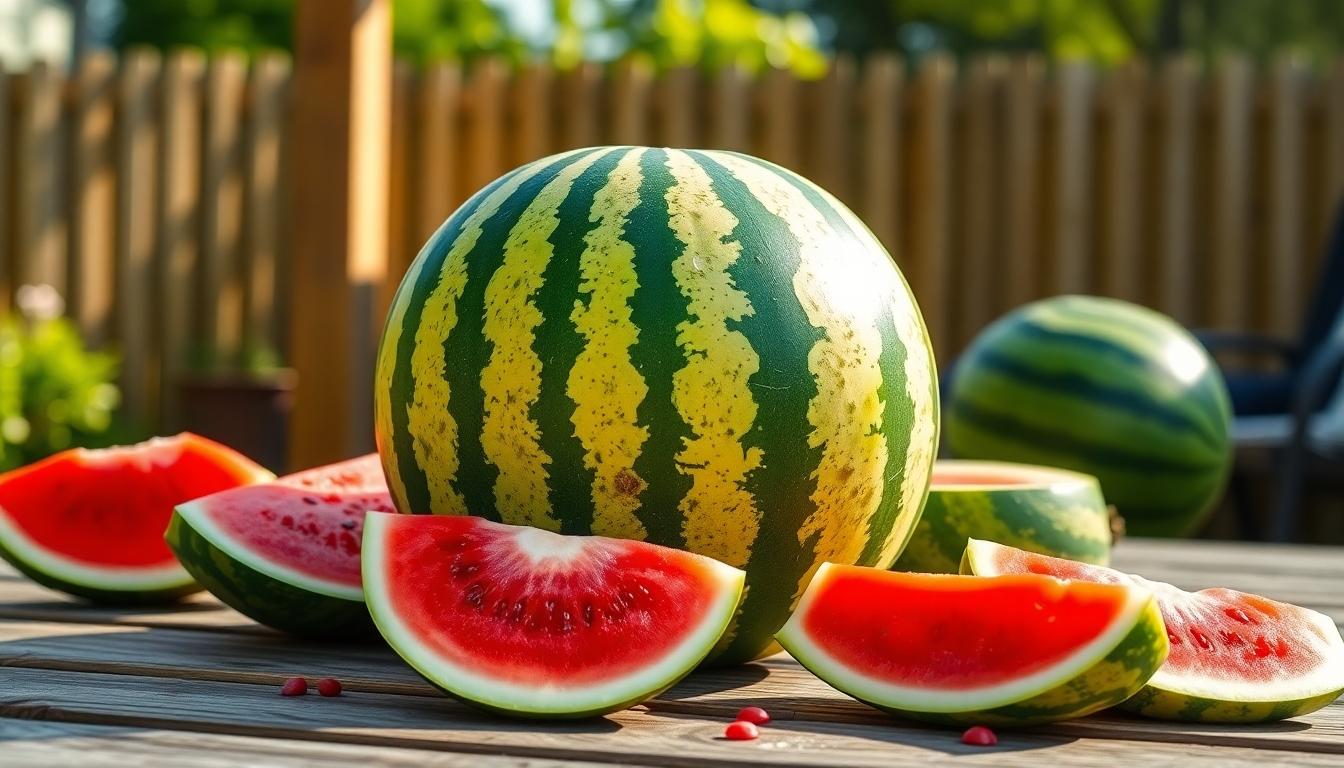
Watermelons provide fascinating geometric riddles that challenge our perception and spatial reasoning. These shape-based puzzles use the unique characteristics of watermelons to create mind-bending conundrums that are both entertaining and educational.
The Round vs Oval Watermelon Paradox
Many people assume all watermelons are round, creating the perfect setup for this tricky riddle: “I’m a fruit with stripes on my skin, inside, my seeds scatter within. I’m not always round; sometimes I’m square, what am I, with shapes that are rare?” The answer, of course, is watermelon. Natural watermelons typically come in two distinct shapes—round and oval—though most riddles don’t specifically address this variation. Japanese farmers have even developed techniques to grow watermelons in cube or heart shapes by placing the growing fruit in molds. This paradox challenges our assumptions about uniformity in nature and creates an excellent foundation for riddles that play with expectations about this summer fruit’s appearance.
The Perfect Slice Challenge
Cutting a watermelon into perfectly equal slices represents a practical geometric puzzle that has stumped many picnic hosts. Though not a traditional riddle, this real-industry challenge involves principles of symmetry, volume distribution, and spatial reasoning. Achieving the perfect watermelon slice requires understanding the fruit’s internal structure, where seeds aren’t uniformly distributed and the sweetest part often lies at the center. Mathematical principles suggest that radial cuts from the center produce the most equitable distribution of both rind and flesh. Experienced watermelon cutters know that maintaining a consistent angle between cuts is key to slice perfection. This challenge transforms an everyday summer activity into a test of precision and geometric understanding, making it an captivating hands-on puzzle for gatherings.
Wordplay Riddles Featuring Watermelons
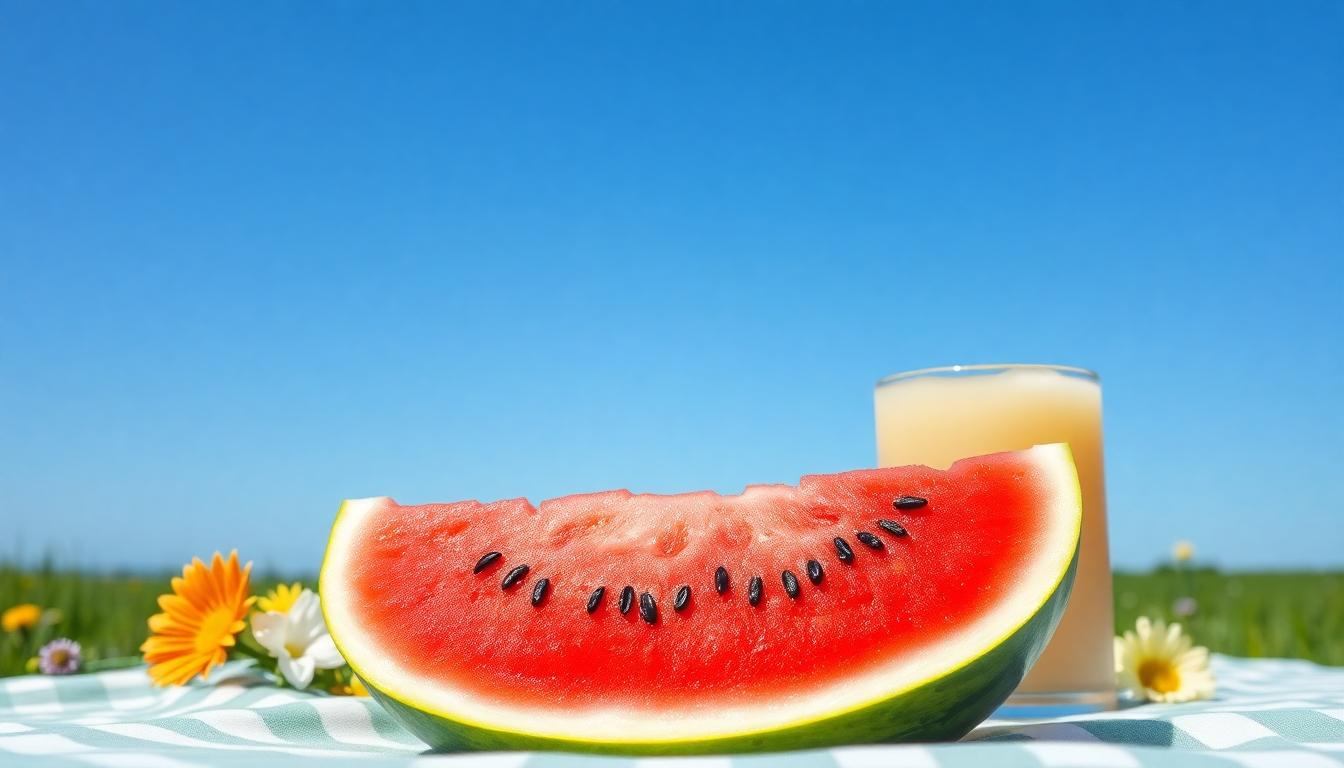
Watermelon riddles cleverly play on the distinctive visual contrasts and characteristics of this beloved summer fruit. These riddles often highlight the striking difference between the green exterior and vibrant red interior, creating simple yet captivating brain teasers.
Pun-Filled Watermelon Teasers
Puns take center stage in the most humorous watermelon riddles, with many focusing on clever wordplay around “rind” and “melon.” Try asking your friends, “Why did the watermelon start a band?” The answer—”It wanted to make some ‘rind’ noise!”—is sure to elicit groans and smiles. Another crowd-pleaser asks, “How does a watermelon answer the phone?” with the punny response, “Rind, rind, who’s there?” These jokes leverage the dual meaning of words to create unexpected humor.
Creative wordplay extends beyond simple puns to therapeutic humor, with riddles like “Why did the watermelon go to therapy? To work on its ‘melon-tality’!” Health-conscious watermelons aren’t left out either, as some riddles ask, “Why did the watermelon visit the gym? To get in ‘melon-shape’!” These playful twists on common phrases transform ordinary watermelons into relatable, personified characters with human concerns and activities.
Watermelon Tongue Twisters
While traditional tongue twisters focusing on watermelons are relatively uncommon, many riddles incorporate rhythmic elements that challenge pronunciation. One popular example describes, “Round and sweet, with seeds to spit, I’m the fruit that everyone loves to split,” leading solvers to the watermelon answer through rhythmic clues. More imaginative riddles paint watermelons as treasure-hiding pirates: “A pirate of sorts, in green I’m dressed, burying treasure, I confess.”
Visual contrasts dominate many watermelon riddles, playing on the fruit’s distinctive appearance: “I’m green and tough on the outside, but inside is where the red sweetness hides.” Others emphasize the watermelon’s impressive water content with riddles like “I’m made of mostly water, yet I’m not a drink. My shell is thick, and my insides pink.” Seasonal associations also feature prominently, with summer-themed teasers such as “In summer, I’m everyone’s delight, cooling you down with each bite.” These riddles capitalize on the watermelon’s status as the quintessential refreshing summer treat, making them perfect for picnics and beach gatherings.
Watermelon Logic Problems for Kids
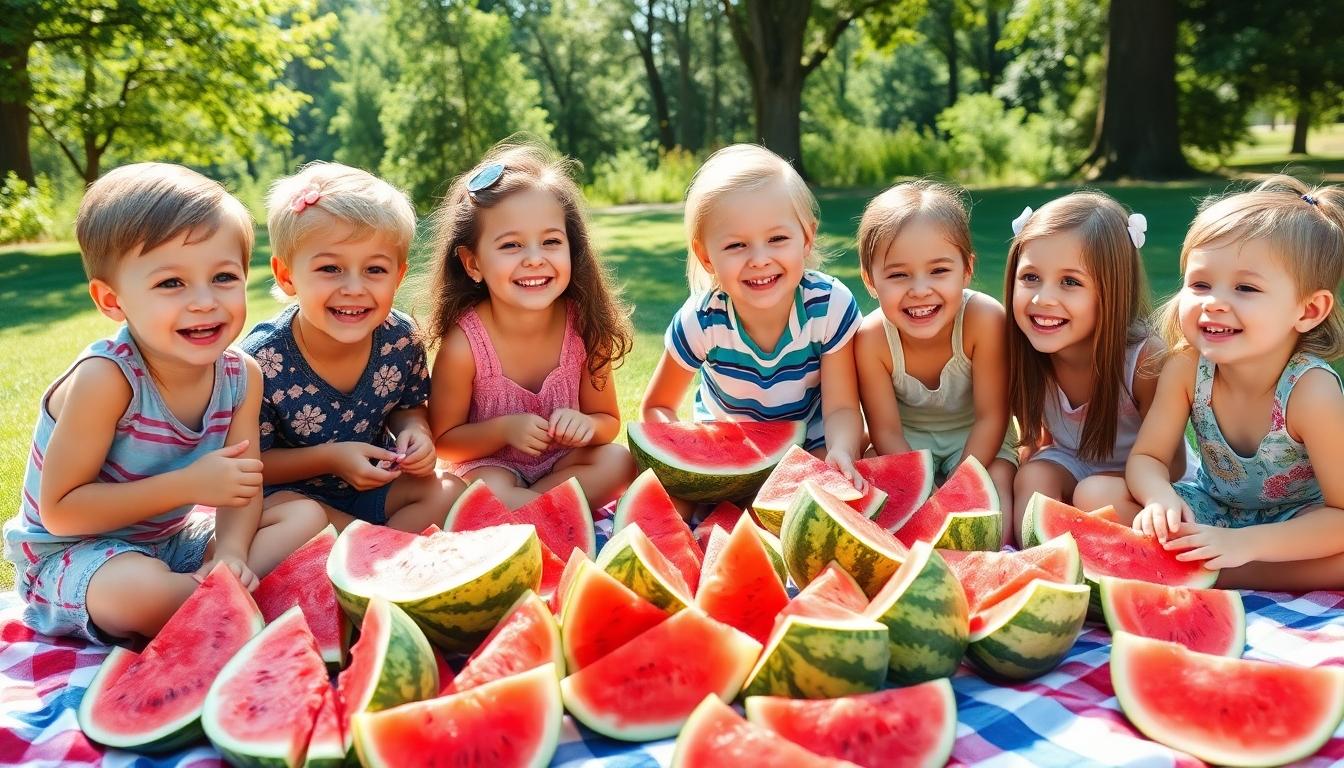
Watermelon-themed riddles offer a perfect blend of fun and brain exercise for children of all ages. These fruity brain teasers can help develop critical thinking skills while keeping kids entertained during summer gatherings or classroom activities.
Easy Watermelon Riddles for Young Children
Young children will love these simple watermelon riddles that introduce basic descriptive concepts and observation skills:
- What am I?
I wear a green suit that’s tough as can be, but inside I’m as sweet as can be.
Answer: Watermelon
- Summer’s Pride
I grow on a vine and need the sun, eating me is so much fun. Green and striped with a red inside, what am I, a summer’s pride?
Answer: Watermelon
- Rind and Inside
My outside is green, but my flesh is red. Sometimes I’m yellow instead. I’m sweet, hydrating, and full of seeds. What am I?
Answer: Watermelon
- Seasonal Fruit
In summer, I’m everyone’s delight, cooling you down with each bite. But try to grow me in winter’s snow, what am I, refusing to show?
Answer: Watermelon
Medium-Difficulty Riddles for Elementary Students
Elementary students can tackle these slightly more challenging watermelon riddles that incorporate facts and more complex thinking:
- The Hidden Percentage
I’m made of mostly water, yet I’m not a drink. My shell is thick, and my insides pink. Guess my fruit, but here’s the trick: What am I with a 92% watery kick?
Answer: Watermelon
- Stripe Mystery
I’m a fruit with stripes on my skin, inside, my seeds scatter within. I’m not always round; sometimes I’m square, what am I, with shapes that are rare?
Answer: Watermelon
- Summer Puzzle
I’m heavy when whole but lighter when shared. My juice runs down chins when I’m properly paired with summer and sunshine and picnics galore. What fruit am I that people adore?
Answer: Watermelon
- Seed Counter
Cultural Watermelon Riddles From Around the World
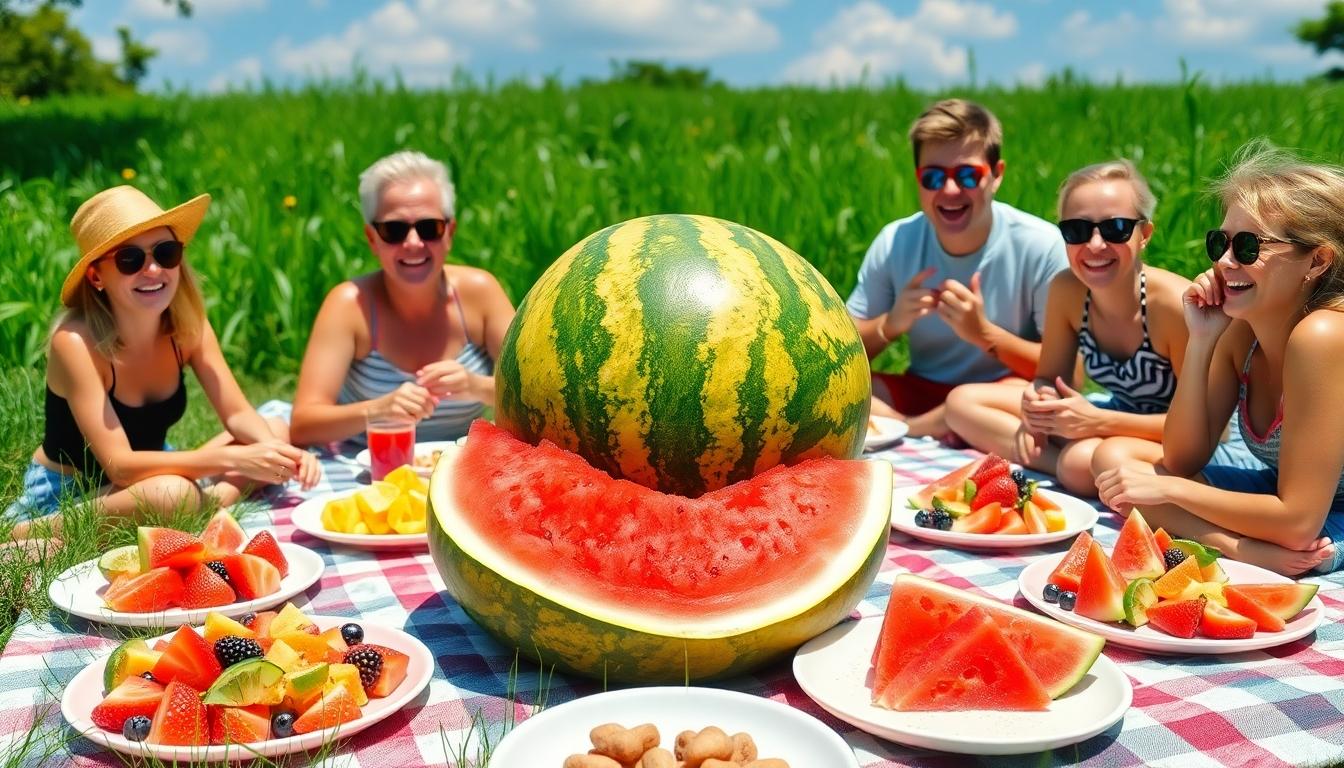
Across different cultures, watermelon has inspired countless riddles that celebrate its unique characteristics. These puzzles reflect both universal appreciation for this refreshing fruit and culturally exact agricultural traditions.
Traditional Fruit Riddles With Watermelon
Traditional watermelon riddles typically focus on the fruit’s distinctive physical properties and growing patterns. “I’m green and tough outside, but red sweetness hides inside” represents one of the most common riddle formats, highlighting the contrast between the watermelon’s exterior and interior. Many cultures incorporate watermelon’s connection to water, with riddles like “I’m a gift from the water, sweet inside with a green coat” emphasizing its high moisture content and refreshing qualities. Agricultural references appear frequently in traditional puzzles, such as “I grow on a vine, green and striped, a summer’s pride,” which teaches children about cultivation methods while entertaining them. These riddles serve as educational tools in many societies, using the watermelon’s structure to explain botanical concepts through captivating metaphors like “I show time with my size, growing against the garden clock.” The watermelon’s impressive water content also features prominently in traditional brainteasers, with questions like “What am I with a 92% watery kick?” challenging solvers to identify this uniquely hydrating fruit.
Modern Interpretations of Ancient Puzzles
Contemporary culture has reimagined watermelon riddles with added complexity and mathematical elements. The viral “watermelon/potato paradox” demonstrates this evolution, presenting solvers with a deceptively simple challenge: “100 kg watermelons drop from 99% to 98% water content—final weight?” This puzzle confounds many people’s intuitive understanding of percentages and weight calculations. Modern watermelon riddles also incorporate references to agricultural innovations, with puzzles mentioning that “sometimes I’m square,” nodding to the cube-shaped watermelons developed in Japan. Today’s riddles often blend traditional formats with STEM concepts, creating technical challenges that appeal to math enthusiasts while maintaining the fruit’s cultural significance. These contemporary interpretations preserve the essence of ancient watermelon riddles while adding layers of complexity that reflect our current educational priorities and technological understanding. The continued popularity of watermelon-themed puzzles across generations demonstrates this fruit’s enduring place in both recreational and educational contexts worldwide.
Watermelon Visual Riddles and Optical Illusions
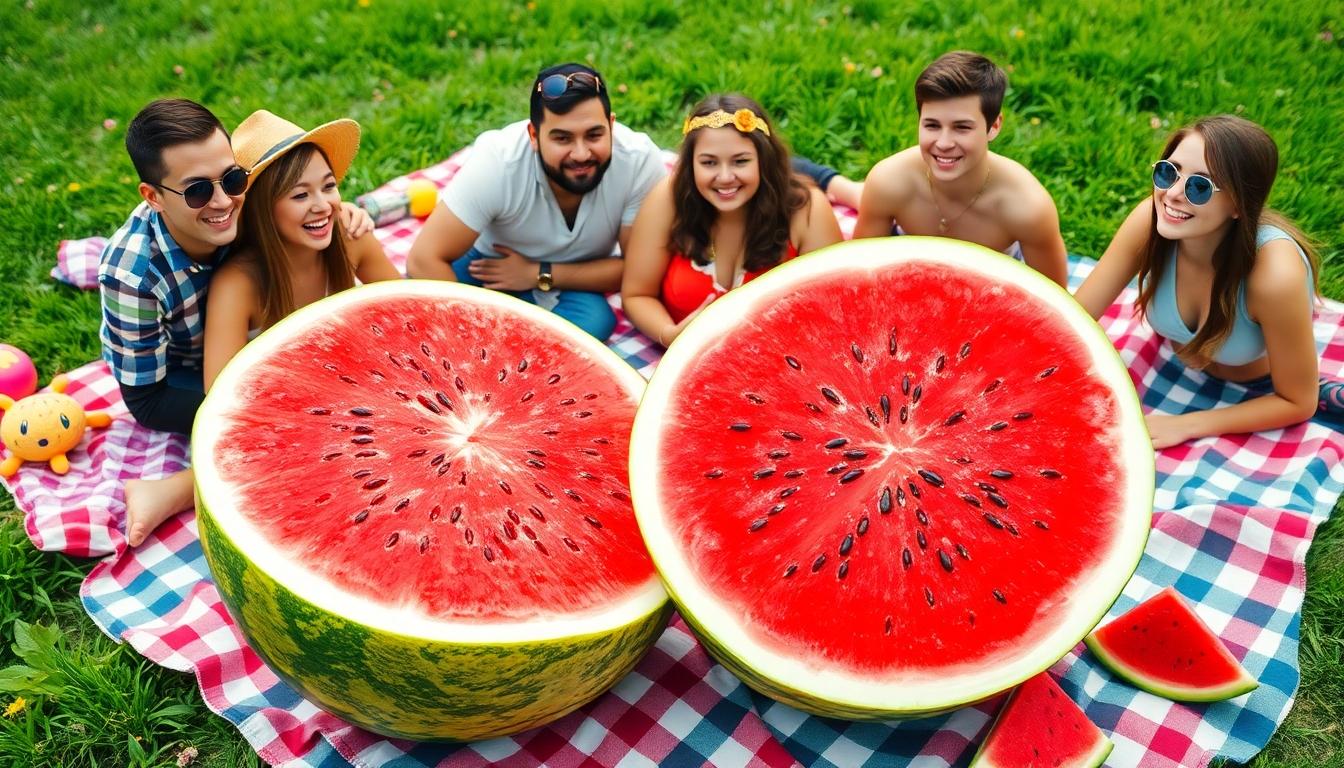
Visual riddles featuring watermelons offer a unique twist on traditional word-based puzzles, challenging our perception and observation skills. While not as widely documented as text-based watermelon riddles, these visual puzzles tap into our ability to recognize patterns, shapes, and colors associated with this beloved summer fruit. Visual watermelon challenges typically fall into several distinct categories that test different aspects of visual perception.
Hidden Object Watermelon Puzzles
Hidden object watermelon puzzles require participants to locate watermelon images concealed within larger, more complex scenes. These puzzles train our visual discrimination abilities as we search for the distinctive green striped exterior or bright red interior among distracting elements. Finding the hidden watermelon often requires careful scanning and attention to detail, making these puzzles excellent for developing focus and observation skills.
Perspective Illusions With Watermelons
Perspective illusions create fascinating visual tricks where watermelons appear to change size depending on their placement within a scene. These optical illusions play with our depth perception, making watermelons look smaller or larger than they actually are. Artists and puzzle creators use strategic positioning and background elements to create these compelling visual challenges that remind us how easily our eyes can be deceived by context.
Color and Shape Illusions
Watermelon’s distinctive color combination of green exterior and red interior makes it perfect for color-based optical illusions. These puzzles might feature watermelon-like shapes that appear to change color based on surrounding visual cues or backgrounds. The stark contrast between the green rind and red flesh creates opportunities for interesting visual effects where colors seem to shift or blend depending on how you focus your eyes.
Visual watermelon riddles provide a refreshing alternative to word-based puzzles while still celebrating this iconic summer fruit’s unique characteristics. They offer captivating challenges for gatherings, social media posts, and educational activities that develop critical visual skills in an entertaining format.
Seasonal Watermelon Brainteasers for Summer Gatherings
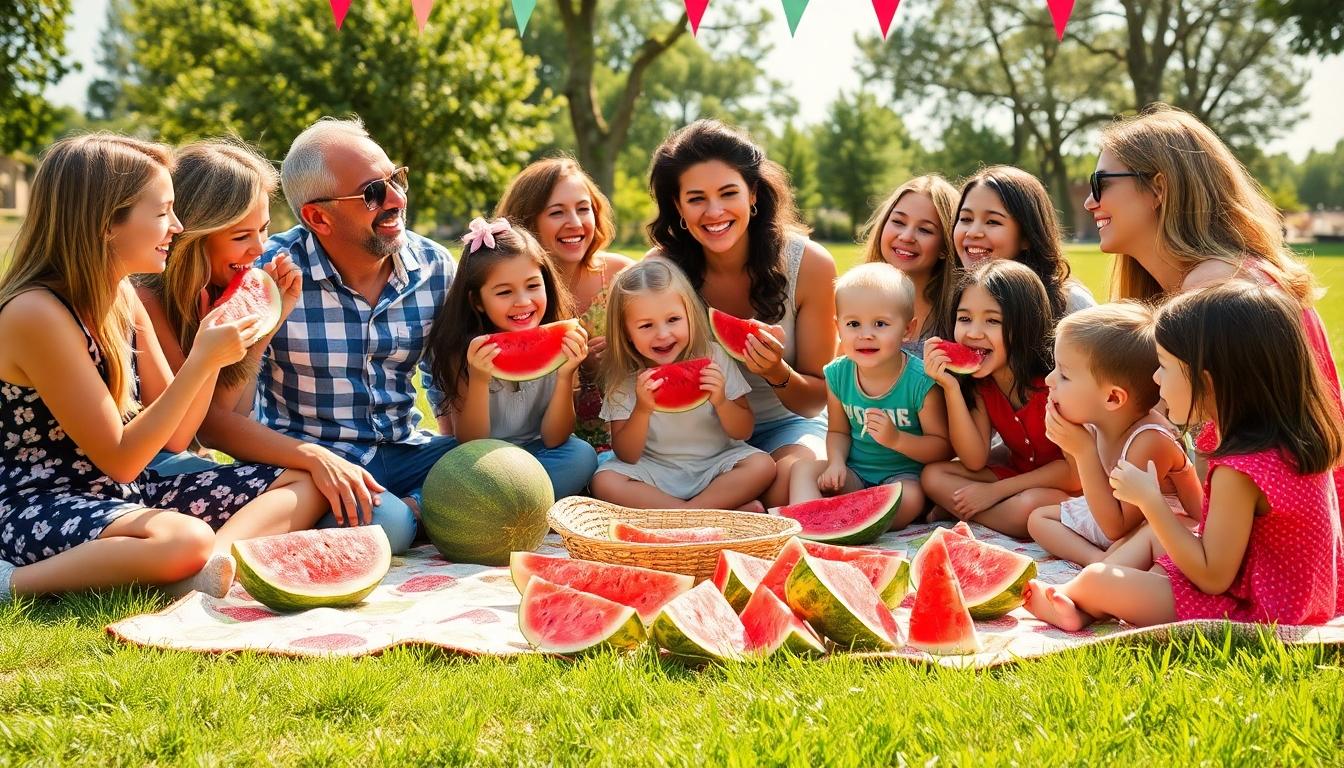
Watermelon riddles add a refreshing twist to summer parties and gatherings, offering both entertainment and mental stimulation for guests of all ages. We’ve collected several categories of watermelon-themed brain teasers that perfectly complement sunny afternoon picnics or evening barbecues.
Classic Watermelon Riddles
- I’m green and tough on the outside, but inside is where the red sweetness hides. What am I?
Watermelon stands as the clear answer to this traditional riddle that highlights the fruit’s distinctive color contrast.
- I’m mostly water, but I’m still a fruit, In the heat, I’m your sweetest loot. Round and heavy, striped and green, What am I, a summer scene?
Watermelon captures the essence of summer refreshment in this playful brainteaser that references its high water content.
- I wear stripes of green, a classic disguise, Inside, black dots wait to surprise. Spit them out or let them stay, What am I that brightens your day?
This riddle cleverly describes watermelon’s iconic appearance and the interactive experience of dealing with its seeds.
Themed Watermelon Riddles
- The Sunburnt Vegetable
I bask in the sun, turning red, not tan, Inside me, a party, where no one’s a fan. What am I, not a vegetable but often ran?
Watermelon gets mistakenly called a vegetable even though botanically being a fruit, creating the perfect premise for this playful riddle.
- The Laughing Seed
I sit in the dark, waiting to perform, When split open, I cause a storm. What am I, that makes laughter the norm?
This creative riddle personifies the watermelon as an entertainer, ready to bring joy once revealed at summer gatherings.
- The Green Pirate
A pirate of sorts, in green I’m dressed, Burying treasure, I confess. What am I, with a juicy chest?
The comparison to a pirate with buried treasure (seeds) inside a green exterior makes this riddle particularly captivating for children.
Benefits of Solving Watermelon Riddles
Solving watermelon riddles sharpens problem-solving skills while providing an entertaining activity for summer gatherings. These brainteasers stimulate creative thinking as participants must connect descriptive clues to identify the fruit. Summer-themed activities become more captivating when incorporating these mental challenges that exercise the brain in a fun, seasonal context.
How Watermelon Riddles Can Improve Cognitive Skills
We’ve explored a wonderful industry of watermelon-themed brain teasers throughout this post. These refreshing riddles do more than just entertain – they strengthen problem-solving abilities while celebrating summer’s favorite fruit.
From mathematical challenges to visual puzzles these watermelon conundrums offer cognitive benefits for all ages. They’re perfect for sharpening critical thinking developing numerical reasoning and improving spatial awareness.
Next time you’re enjoying a juicy slice try sharing some of these riddles with friends and family. You’ll create memorable moments while exercising your brain. So grab a watermelon jump into these mind-bending puzzles and enjoy the sweet rewards of mental stimulation!
Frequently Asked Questions
What is the main focus of the watermelon riddles collection?
The collection features watermelon-themed riddles that celebrate the fruit’s characteristics like green skin, red flesh, and high water content. These riddles use wordplay and puns to entertain both children and adults, making them perfect for summer gatherings, classrooms, or friendly competitions. They vary in difficulty and aim to add fun and educational value to any occasion.
Are there riddles suitable for young children?
Yes! The collection includes easy watermelon riddles specifically designed for young children that introduce basic descriptive concepts and observation skills. These simpler riddles help develop critical thinking while keeping the content age-appropriate and fun. The playful nature of these riddles makes them perfect for preschool and early elementary school children.
What is the Watermelon Paradox?
The Watermelon Paradox reveals a surprising mathematical truth: when a watermelon’s water content decreases from 99% to 98%, it loses 50% of its weight, not just 1%. This counterintuitive result highlights how our intuition about percentages can mislead us. It’s a fascinating brain teaser that challenges mathematical understanding and demonstrates how seemingly small changes in percentages can have dramatic effects.
How do visual watermelon riddles differ from word-based ones?
Visual watermelon riddles challenge perception and observation rather than verbal reasoning. They include hidden object puzzles where participants locate watermelon images in complex scenes, perspective illusions that play with depth perception, and color/shape illusions using the fruit’s distinctive appearance. These visual challenges develop different cognitive skills than traditional word-based riddles.
What cultural significance do watermelon riddles have?
Watermelon riddles appear in various cultures worldwide, celebrating the fruit’s unique characteristics through traditional puzzles. These often highlight the contrast between exterior and interior, connection to water, and agricultural practices. Modern interpretations blend traditional formats with STEM concepts, showing how these riddles have evolved while preserving cultural significance across generations.
What is the watermelon seed counting puzzle?
This classic mathematical challenge tests perception and analytical skills by asking solvers to estimate the total number of seeds in a watermelon. It teaches that visible seeds represent only a fraction of the total and develops critical analysis and numerical reasoning. Solving strategies include using agricultural data and understanding the non-uniform distribution of seeds within the fruit.
How can watermelon riddles benefit children’s development?
Watermelon riddles enhance critical thinking, problem-solving skills, and creative thinking in children. The easier riddles introduce basic concepts and observation skills, while medium-difficulty ones incorporate educational facts and more complex thinking. These fun brain exercises develop cognitive abilities while entertaining children, making learning enjoyable and engaging.
What types of watermelon shape riddles are featured?
The collection includes the Round vs Oval Watermelon Paradox that challenges the assumption that all watermelons are round, and discusses unique shapes like cubes and hearts developed by Japanese farmers. The Perfect Slice Challenge involves cutting watermelons into equal slices, emphasizing principles of symmetry, volume distribution, and spatial reasoning skills.
How can watermelon riddles enhance summer gatherings?
Watermelon riddles provide entertainment and mental stimulation for guests of all ages at summer events. They serve as icebreakers, promote social interaction, and create memorable shared experiences. These seasonal brainteasers transform ordinary gatherings into engaging activities that combine fun, education, and creativity while celebrating this iconic summer fruit.
Where can these riddles be used effectively?
These watermelon riddles are versatile and can be used in numerous settings: summer parties, family picnics, classroom activities, educational workshops, children’s camps, ice-breaker sessions, and even virtual gatherings. They’re particularly effective during the summer months when watermelons are in season, adding a thematic element to any event while providing both entertainment and intellectual stimulation.







